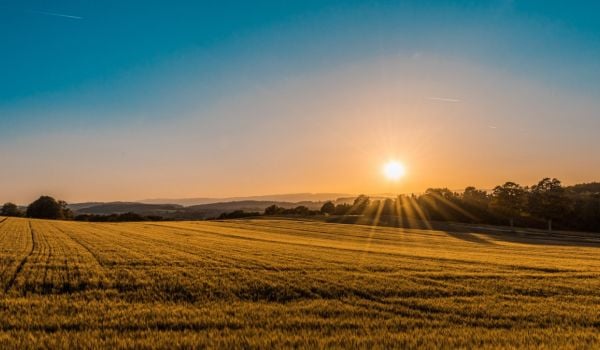With around 150 stalls, the Saturday organic farmers market at Farroupilha Park would give almost any outdoor produce market a run for its money. For nearly 30 years, organic growers have been congregating in this leafy corner of Porto Alegre. On an unusually warm recent July day, over 3,000 customers clogged the narrow passageway between stalls that span two blocks. Although it was currently the height of the Brazilian winter, the subtropical soil still yielded juicy tomatoes, luscious grapes and hearty sweet potatoes.
Ayrton Kochenborger, proprietor of Novo Citrus, helped regulars snap up bottles of his addictive organic juice: guava, mango, passion fruit, orange and especially tangerine. The latter “is our flagship, where it all began,” he said. Novo Citrus started as a bootstrap operation in 1998, benefitted from the market’s low barrier to entry for a new business and grew alongside Brazil’s boom in organics, a designation codified by federal law in 2003. Now, said Kochenborger, “People go after the brand,” and Novo Citrus can now be found on supermarket shelves in several Brazilian states.
Kochenborger grows on a 34-hectare (84-acre) farm about 80 kilometers (50 miles) from the capital, the kind of just-within-reach rural hinterland that sits well with the buy-local crowd. While roughly three-quarters of vendors come from outside the city limits, the remaining quarter are even closer as they truck in their wares from the relatively rural area in the southern part of the city, a unique feature of Porto Alegre’s landscape that is the subject of soul searching on what a sustainable and resilient city should actually look like.
Take farmers like Silvana and Luciana Bohrer, who grow organic lettuce, arugula, leeks, tomatoes and eggplants on their two-hectare (five-acre) farm. “The market is essential for us because when you sell face to face, people believe in the product and you can create a relationship. Our sales are great: Everything we produce, we sell,” Silvana said. The less developed southern zone of Porto Alegre is dotted with farms like the sisters’ Sítio Capororoca, with many opting to go all organic and tilling patches of soil in the one-to-five hectare (2.5-12 acre) range.
These aren’t just trendy urban agriculture experiments. The farmers of Porto Alegre contribute R$22 million ($9.6 million USD) to the city’s gross domestic product annually, about .06 percent of the total city GDP, according to researchers from the Federal University of Rio Grande do Sul (UFRGS) School of Agronomy. The actual amount is probably higher, as these figures refer only to what is reported to tax authorities.
The researchers shared these and other findings with a group of Porto Alegrense farmers last month at a church in the heart of the city’s agricultural zone. Far from the high-rise apartment buildings near downtown, the area has the feel of what Rosane Demarco, an organic farmer and restaurateur who lives nearby, called “a country town in the capital.” On the nearly hour-long drive from downtown to the event, that description seemed apt as cars shared the road with horse-drawn carts plodding along a rolling landscape.
Earlier, over lunch at her restaurant (urucum bread, Malabar spinach omelets, and epazote and radicchio salad) Demarco explained some of the issues at hand. In 1999, the city’s master plan changed the Rural Zone’s designation to Rural-Urban. “This disincentivized agricultural producers because now they could sell their land to real estate developers,” Demarco argued. Indeed, there were signs for realtors along the road leading to the event and evidence of several Minha Casa, Minha Vida public housing projects, whose federal fiscal incentives result in housing built in the area with the cheapest land.
“Diagnostic and Proposals for the Rural Zone” was a joint venture of the UFRGS Agronomy School and Emater, a publicly funded agricultural extension program. It drew a crowd of 50 that included hardened older farmers mixing with young students who worked on the research project, all bundled up in sweaters and sipping the ubiquitous traditional herb chimarrão (also known as yerba mate in Spanish-speaking areas) against the winter chill in the unheated church annex.
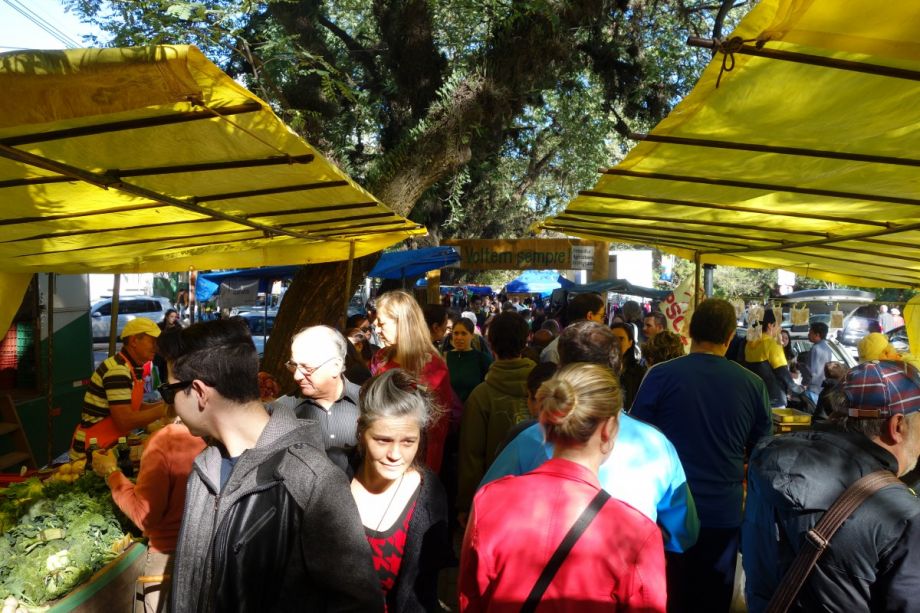
Porto Alegre’s farmers contribute $9.6 million USD to the city’s gross domestic product annually. (Photo by Greg Scruggs)
If the news about potential was good – “There is a growing demand for organic products,” insisted professor Ingrid de Barros – the situation on the ground was disconcerting. In the 15 years since the rural area was rezoned, complaints have mounted. New housing, both formal and informal, has threatened the water table, brought urban insecurity concerns, contributed to theft of agricultural goods and above all raised the price of land, creating an enticement for farmers to sell out to real estate interests and pricing out newcomers.
Some agricultural activities, like raising pigs, encountered new licensing hurdles with the rural-urban zoning that have effectively rendered their activity illegal, although the crowd saw it as benign. “Who contributes more pollution?” Miguel Dall’Agnol, one of the UFRGS professors asked rhetorically, “300 pigs or 3,000 people living in a condo complex?” Lauri Aldale de Melo, a pig farmer for 30 years in Porto Alegre who was forced to close shop six years ago, piped up: “We consumed 13 tons of organic material per day that would otherwise have been going to a landfill. Technically we were illegal [since 1999], but the school system bought our pork anyway.” He called the situation a samba do criolou doido, a Brazilian expression for something that makes no sense.
Next City contacted Andrea Oberracher, who works in the Office for the Supervision of Urban Development at the Municipal Urban Planning Secretariat and was present during the 1999 master plan revision. She offered the city’s point of view: “We discovered that we were providing urban services – water, trash collection, road maintenance – to areas of the city that were paying taxes to the federal government rather than the city’s coffers.”
Because of the Rural Zone designation, this land, while within the political jurisdiction of Porto Alegre, was not within its taxing jurisdiction. Rather, the farmers paid the federal Agricultural Reform Institute. Although a relatively small amount, this situation was a matter of principle for City Hall. Moreover, Oberracher claimed, “What was mapped out as the Rural Zone in Porto Alegre was not actually where there was very much agricultural production according to the research we did leading up to the 1999 master plan. Rather, the Rural Zone corresponded with environmental protection areas. Agriculture was nearby, but it didn’t exactly overlap with the supposed Rural Zone.”
To that end, planners thought it best to do away with an inaccurate designation and created two land-use categories for the city, roughly half of the land area for each. A densely occupied, urban zone called “intensive” and a low-density, low-infrastructure, low-service zone called “thin” where agriculture could thrive. Overall, the numbers in Porto Alegre bear out this situation. Its population of about 1.5 million, almost identical to Philadelphia, occupies an area 35 percent larger with only 65 percent of the City of Brotherly Love’s density.
“It was never our intention to hurt the agricultural industry. Rather, we wanted to manage it better,” Oberracher assured. She pointed to the Agricultural and Livestock Division within the municipal government as an example of the public sector’s open arms toward the farming community operating within city limits. Most importantly, a new zoning change is on the table, suggesting that the urban farmers’ complaints have been heard.
“We are preparing a law that would reconstitute part of the Rural Zone so that these activities [like raising pigs] can be developed,” she affirmed, without offering too many details as the proposal has yet to be presented to city council. However, she did say that the proposed zone would encompass 4,000 hectares (almost 10,000 acres), or a little more than eight percent of the city’s land cover.
“This appears to be the best solution for the time being. At the very least, it’s a tool to confront rampant growth on the periphery that lacks infrastructure and urban form,” concluded Tiago Holzmann da Silva, President of the Rio Grande do Sul chapter of the Brazilian Institute of Architects.
With organic agriculture booming in the Porto Alegre area, these plans are welcome news for producers and consumers worried about food security. In its most recent survey from 2012, the National Agency for Sanitation Vigilance found that 29 percent of Brazilian agricultural goods had unsatisfactory levels of pesticides. For years, activist groups both inside and outside Brazil have been lamenting lax regulations on agribusiness, which resulted in the country becoming the world’s leading consumer of pesticides, many of them illegal elsewhere, in 2008. Given the danger lurking in supermarkets, the crowds thronging the Farroupilha Park farmers market from the “intensive” side of town should be happy to support their neighbors who arrive early just a short distance away on the “thin” side of the city.
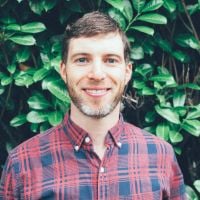
Gregory Scruggs is a Seattle-based independent journalist who writes about solutions for cities. He has covered major international forums on urbanization, climate change, and sustainable development where he has interviewed dozens of mayors and high-ranking officials in order to tell powerful stories about humanity’s urban future. He has reported at street level from more than two dozen countries on solutions to hot-button issues facing cities, from housing to transportation to civic engagement to social equity. In 2017, he won a United Nations Correspondents Association award for his coverage of global urbanization and the UN’s Habitat III summit on the future of cities. He is a member of the American Institute of Certified Planners.


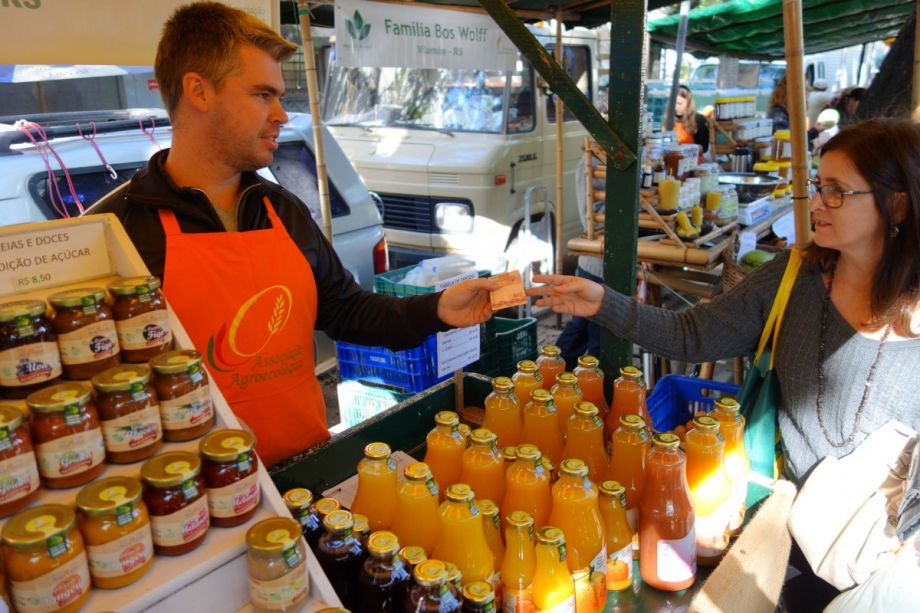


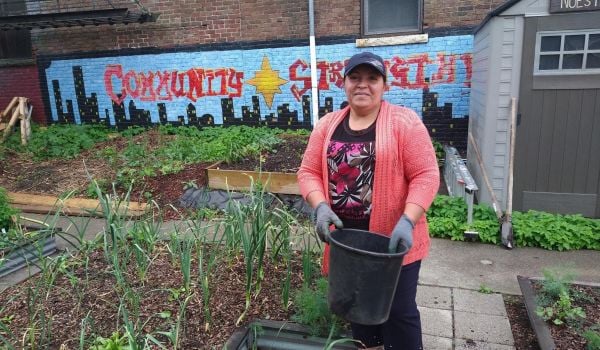
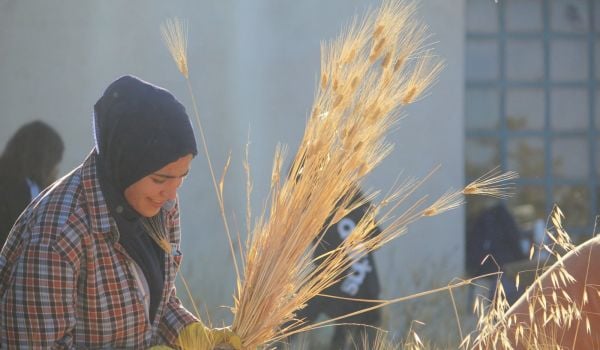
_on_a_Sunday_600_350_80_s_c1.jpeg)

_600_350_80_s_c1.jpeg)
